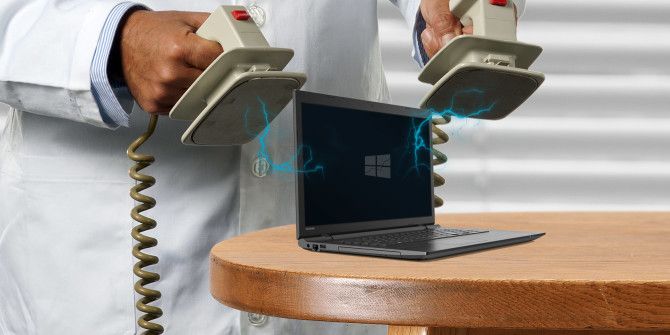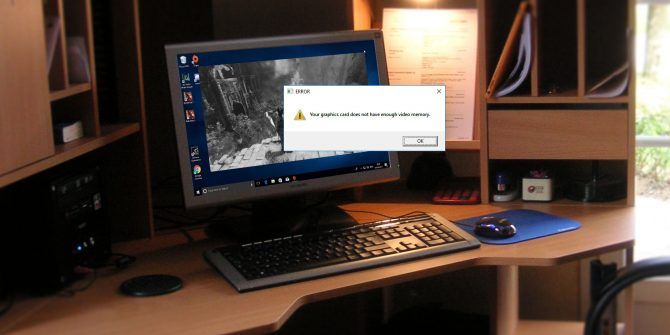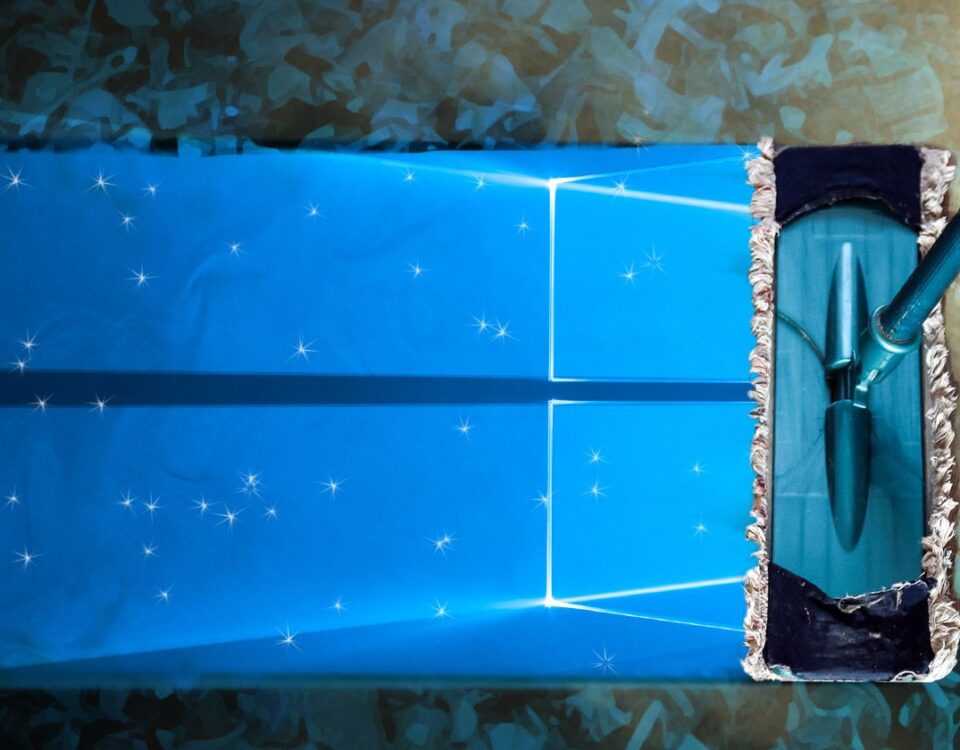Windows 10 won’t boot? Don’t despair if your computer won’t start. There’s a huge number of fixes out there. The trick is knowing which tools to use first. Our advice is to start with the easiest fixes and, in order, move to the harder ones.
1. Try Windows Safe Mode
The easiest fix for Windows 10 boot problems is Safe Mode.
It is an alternative boot scheme that starts your computer with a minimum of software. The modified boot process can bypass driver and software problems. The weird thing is, sometimes starting the computer in Safe Mode can fix boot problems. It’s not always clear what processes run in Safe Mode, but experience has taught me it’s an effective and easy fix.
If your computer doesn’t boot, you might have problems entering Safe Mode. There are two relatively easy ways to get into it.
Method 1: Enter Safe Mode From Windows Recovery
Some unbootable computers freeze on the Windows splash screen.
However, you can force the computer to enter Safe Mode by interrupting the boot process three times in a row, which automatically triggers Windows Recovery. Once the Windows Recovery menu appears, do the following:
From the Choose an option recovery window, choose Troubleshoot, then Advanced options, and then Startup Settings.
From Startup Settings, you can reboot the computer into Safe mode, either with the internet-enabled or disabled. Either option should work.
Method 2: Safe Mode with a Windows 10 Recovery Drive
If you cannot enter Safe mode, you will need to create a Windows 10 USB recovery drive. The recovery drive contains the Windows 10 recovery environment—which used to be accessible by tapping F8 on boot. Unfortunately, Microsoft decided to eliminate this feature.
Creating a recovery drive requires another Windows 10 computer and a USB drive with at least 512MB of storage. If you want to create a system backup (you’ll see an option to back up system files to the recovery drive), you’ll need 16GB of storage.
Launch Control Panel > Create a recovery drive.
Then follow the guided instructions.
After creating the recovery drive, you can boot your computer from it only if you’ve turned on USB drives as bootable from the POST environment, also known as UEFI or BIOS. After enabling USB drives as bootable, insert the drive into your computer and restart (this may require hitting the reset button or holding the power button down for a few seconds).
2. Check Your Battery
If you’re using a laptop, battery issues can cause boot problems. It’s worth testing an alternate charger cable to see if that solves the problem. Confirm that the cable is working by trying it out on another laptop. Next, remove your system’s battery and plug the device into a power source.
Removing the battery will help you discover if a hardware problem is to blame. The key here is to ensure that you’re only testing one element at any given time. If power issues interfere with the startup, it’s crucial that you know whether the battery, charging cable, or another component requires replacement.
3. Unplug All Your USB Devices
A serious issue with Windows 10 updates is that sometimes your computer won’t boot because of a conflict with a USB device. You can solve this problem by unplugging all USB devices (and any other unneeded peripherals) and restarting the computer.
If your computer stays on the same loading screen, removing all USB devices can solve the problem. Other times, you may need to restart the computer.
4. Turn Off Fast Boot
There’s a setting inside your BIOS or UEFI called Fast Boot that allows Windows 10 to start faster by preloading drivers. Unfortunately, Windows Update can break Fast Boot compatibility. Fortunately, you can turn Fast Boot on and off through your BIOS rather than inside Windows 10.
The method of entering the BIOS/UEFI screen differs between computers. For instructions on finding the correct method for your computer, please consult our guide to entering a computer’s UEFI/BIOS. For most people, tapping the Delete key while booting should trigger the POST environment. The two other keys that might work are F2 and Escape.
After entering BIOS or UEFI, the Fast Boot option is normally part of the Advanced options, although it can be anywhere.
If you don’t see any Fast Boot entry, your computer was made before 2013 as they did not include a Fast Boot option.
5. Check Your Other BIOS/UEFI Settings
A misconfigured BIOS/UEFI can prevent your desktop computer from starting.
BIOS/UEFI is a pre-boot environment containing the hardware settings for your computer. They’re useful for recovery because they work even when Windows doesn’t.
Accessing these settings requires launching your computer in BIOS mode. Once in BIOS mode, check the following settings:
Secure Boot
Secure Boot on the wrong setting can cause your computer not to start. You can disable Secure Boot in the BIOS, but doing so may require that you reset Windows 10 to factory settings and/or reset your BIOS. Furthermore, disabling Secure Boot may stop you from upgrading to Windows 11.
The reason Secure Boot causes problems is that it’s designed to protect computers against malware. Because it checks the drivers and hardware loaded by Windows at startup, any driver or hardware component not recognized by the system will generate an error at boot.
Secure Boot settings are located under Boot options. You can turn it on or off. It should be set to Windows UEFI mode instead of Other OS (usually Linux).
Compatibility Support Module (CSM)
A boot drive formatted using a BIOS system requires an MBR partition table. A UEFI-formatted disk requires a GPT partition table. CSM allows for the UEFI system to function as the older MBR system.
Reset Your BIOS Configuration
If your BIOS settings are incorrect, but you don’t know how to fix them, sometimes resetting the BIOS/UEFI to factory defaults fixes the issue.
6. Try a Malware Scan
Malware is a major cause of an unbootable computer. The best method for dealing with malware is a bootable antimalware rescue disk. I prefer Kaspersky’s free disk as it only requires downloading the image and using Etcher to image a flash drive or other writable disk. Etcher works in Windows, macOS, and Linux.
You can then boot into the afflicted computer using the rescue disk and remove malware preventing the computer from booting.
Please note that Kasperkey’s disk image requires a UEFI system. See Step 5: Check Your Other BIOS/UEFI Settings for details.
Download: Kaspersky Rescue Disk (Free)
7. Boot to Command Prompt Interface
It might still be possible to boot into the Command Prompt. Using this interface, you can perform more troubleshooting procedures. You’ll need to have Windows 10 on a bootable disk or USB drive to perform the procedure, so use another computer to set that up before you get started.
To boot to the Command prompt, start your computer. While it’s initializing, watch out for details of a combination of keys that will allow you to enter the BIOS. This information is typically delivered alongside the vendor logo.
Navigate to the Boot tab and make either the USB or DVD drive the first bootable device. Your choice here will depend on where your copy of Windows 10 is located. Again, the specifics of this process may vary from one system to another, so consult the on-screen instructions.
Next, insert the disk or drive containing Windows 10 into your system, save your configuration, and restart your PC.
When prompted, use your keyboard to specify that you want to boot using the disk or drive.
Enter the requested language, currency, and input preferences, then select Repair your computer on the next screen. Next, select Troubleshoot > Advanced Options > Command Prompt, you should then see a window to enter commands.
8. Use System Restore or Startup Repair
If you’re already booting Windows 10 from a disk or drive, it’s well worth utilizing a couple of utilities that are available as part of the process. Once you’ve booted from the drive as detailed above, you’ll get access to options that can get your PC back on track. Look out for links to System Restore and Startup Repair on the Advanced Options screen.
System Restore is a utility that allows you to return to a previous Restore Point when your computer was working normally. It can remedy boot problems caused by a change you made rather than a hardware failure.
Startup Repair is a general-purpose troubleshooter for issues that prevent Windows from starting up. If you’re struggling to find the source of your boot issues, it’s a good idea to run the utility in case it can find a solution.
9. Reassign Your Drive Letter
A system with more than one drive installed can cause boot issues for Windows 10 users if their operating system (OS) volume has its drive letter unintentionally unassigned. However, you can fix this problem with a minimum of fuss by booting to the command prompt interface.
Boot to a command prompt window as explained above, then enter the following to run the disk partition utility:
diskpartOnce this is done, input list volume to print the details of all the volumes currently hooked up to your system. If your boot volume doesn’t have a letter drive assigned, you will need to assign one.
To assign a letter to a drive, you can use the select and assign letter commands.
For instance, if I wanted to assign the letter E to the Audio CD volume in the above image, I would first input select volume 0 and then input assign letter=E to complete the process.
As always, be very careful when making changes in the command prompt. Making mistakes here can quickly cause further problems with your PC.
10. Dodge the Windows 10 Bootloader
If you run into problems while trying to reinstall Windows 10, you may encounter the new version of the bootloader utility. This can sometimes interfere with booting an existing copy of Windows.
Fortunately, there’s a relatively straightforward way to remedy this situation. Boot to the command prompt interface and enter the following:
bcdedit /set {default} bootmenupolicy legacyRestart your computer, and you should find that the legacy bootloader interface has replaced the Windows 10 iteration. You should have no further problems entering Windows 10 Safe Mode or accessing your existing OS installation.
11. Try a Third-Party Utility
Figuring out the cause of the problem is the most challenging part of remedying boot issues. When your system can’t even boot, it’s difficult to diagnose the problem. However, a third-party utility called Boot Repair Disk might have more success.
Boot Repair Disk is an open-source rescue disk that you can use to automatically find and fix issues preventing your PC from booting. It’s very easy to use: you only have to select whether you’re using a 32-bit or 64-bit version of Windows. Tests and any fixes are carried out automatically, although there are options that allow for closer control.
It makes no guarantees of fixing your PC, but it may identify hidden problems.
12. Factory Reset
We’re getting into more difficult and destructive repair options. Aside from a factory reset, the more difficult options include restoring and refreshing your computer. Each has its own advantages and weaknesses.
A factory reset destroys some apps and other data, but you can opt to keep some of your files. A Windows 10 factory reset (Microsoft refers to this process as just “reset”) restores the computer to its default operating state.
13. Repair Update (“In-Place Upgrade”)
The repair installation is similar to a factory reset, except in one big way: it completely reinstalls your operating system. Unfortunately, it requires downloading the entire Windows operating system, and you’ll need a functional Windows computer with an internet connection.
This method requires a functional computer, a DVD or USB drive, and an internet connection. More or less, you must download and run the Windows USB/DVD Download Tool and use it to create a bootable installer.
This method is fairly complex, but the following video can guide you through the process.
Windows 10 Boot Problems: Fixed!
Keep in mind that boot differs from Power On Self Test (POST). A computer that doesn’t display a splash screen and can’t even enter its BIOS or UEFI mode needs its hardware diagnosed for problems.
Solving Windows 10 boot problems is worse than in previous Windows versions, thanks to the removal of an easy-to-access Safe Mode. Yes, you read me right. Microsoft removed the F8 option for booting in Safe Mode to give us a 2-second faster boot. That’s why it’s extra important that you use a 16GB flash drive to create a system recovery drive.
Read Next
About The Author









